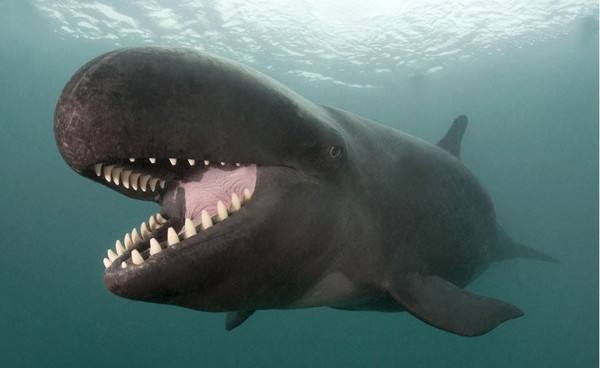Pseudorca crassidens
IUCN
LCBasic Information
Scientific classification
- name:Pseudorca crassidens
- Scientific Name:Pseudorca crassidens,False Killer Whale, Faux-orque,Orca Falsa,Phocaena crassidens Owen,Black whale, false killer whale, false pilot whale, false killer whale
- Outline:Cetacea
- Family:Delphinidae F.K.whale
Vital signs
- length:5-6m
- Weight:1-2.5t
- lifetime:About 60 years
Feature
Similar to killer whales, but smaller in size and all black
Distribution and Habitat
False killer whales are widely distributed in all oceans except the Arctic Ocean. They live in warm temperate to tropical waters around the world. In China, they are found in the Bohai Sea, Yellow Sea, East China Sea, South China Sea and Taiwan Sea.
China: Bohai Sea, Liaoning, Shandong, Yellow Sea, Jiangsu, East China Sea, Jiangsu, Zhejiang, Fujian, Penghu, Taiwan, South China Sea, Hainan Island, Hong Kong, Western Pacific Ocean, Guangxi.
World: Warm temperate to tropical ocean waters, mainly appearing in deep seas, and also in inland seas such as the Red Sea and the Mediterranean Sea. They migrate north and south along the coast as the temperature rises and falls with the seasons. Angola, Argentina, Australia, Benin, Brazil, Cambodia, Canada, Chile, China, Colombia, Costa Rica, Côte d'Ivoire, Cuba, Denmark, Djibouti, Ecuador, Fiji, France, French Polynesia, Gabon, Germany, Ghana, Grenada, Honduras, Hong Kong SAR, India, Indonesia, Iraq, Ireland, Italy, Japan, Kenya, Malaysi
Appearance
The body is similar to a killer whale but smaller, with a body length of about 5 meters and a weight of about 665 kilograms. The body color of the whole body is black. The head is round, beakless, the upper jaw is slightly more protruding than the lower jaw, the dorsal fin is smaller than that of a killer whale, the flippers are very pointed, about 1/10 of the body length, and are significantly curved backward, with the middle part of the front edge protruding and the end pointed. The width of the caudal fin is approximately 1/5 of the body length. The mouth is large, and the cleft cuts into the direction of the eyes, [1] making its face very terrifying. There is no beak and the upper jaw is slightly more protruding than the lower jaw. There are generally slightly fewer teeth in the upper jaw. The teeth are large and pointed, with a length of 8 cm, a diameter of 1.5 to 2 cm, and a round cross section. Among the 16 pairs of ribs, the first 6 pairs are double-headed ribs, and the first 6
Details
False killer whale is the only species in the genus False killer whale of the Dolphin family, and ranks third in size among the dolphins.html">Dolphins.

False killer whales are fast and active swimmers. When they float, they often lift their entire head and most of their body out of the water; sometimes even their pectoral fins are visible. When emerging, they often open their mouths wide, exposing rows of teeth. Sometimes they stop suddenly or make sharp turns, especially when hunting. They approach ships to explore and ride the waves from the bow or stern. They often jump up and hit the waves, often turning to hit the water sideways, creating a splash almost as big as their body size. When excited, they will gracefully jump out of the water and hit the waves with their tails. They are relatively easy to strand. They like to live in groups of dozens, hundreds or even thousands of individuals. They are very attached to their companions and rarely act alone.
In groups of false killer whales, they sometimes break into smaller groups or families, with an average of 18 individuals in a group (usually 10 to 30). Families include male and female false killer whales of all ages. False killer whales mainly feed on cephalopods, but also eat mackerel, Spanish mackerel, bonito, horse mackerel (various fish under the genus horse mackerel), yellowtail, dolphin, marlin, young sharks, etc. Sometimes they also attack humpback whale calves.
False killer whales have a long breeding cycle and are viviparous. They can breed all year round with a gestation period of about 15 to 16 months, with the peak of breeding in late winter to early spring, and mixed mating. They give birth to one baby per year, with a lactation period of 10 to 12 months. The body length of newborn calves is 1.5 to 2.1 meters. Female false killer whales reach sexual maturity at the age of 8 to 11, and males at the age of 8 to 10.
False killer whales often engage in "collective suicide" behavior. In many places in the world, it is common to find entire groups of false killer whales stranded, some with hundreds, some with two or three hundred.
The fat, skin, meat and bones of false killer whales can all be used, and the comprehensive utilization value is very high. The large-scale hunting by humans has caused a rapid reduction in its resources. Secondly, the increasingly serious pollution of the marine environment threatens its living environment.
It is listed as a second-level key protected animal in China and CITE Appendix II.
Protect wild animals and eliminate game.
Maintaining ecological balance is everyone's responsibility!








